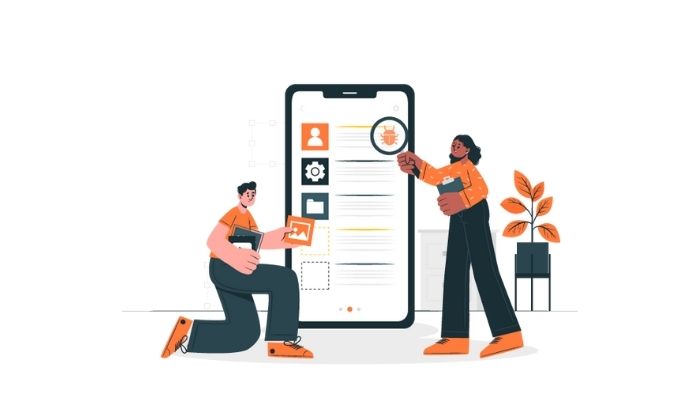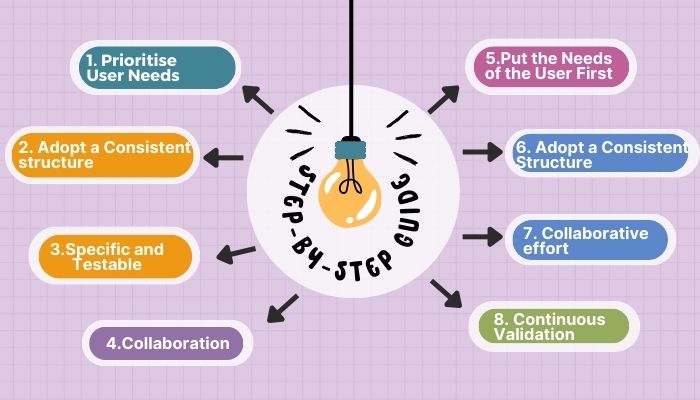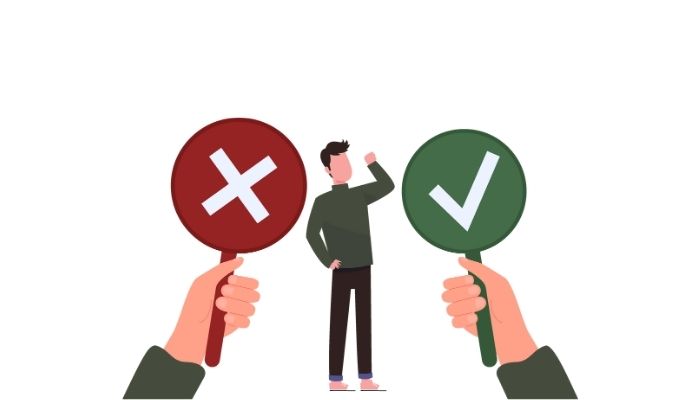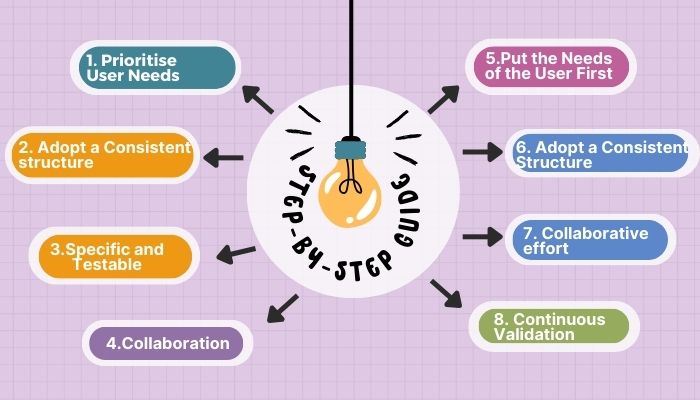Table of Contents
In UX design UX User stories play an important role because they help designers understand how users feel and help them make great experiences. This piece goes into detail about what user stories are, what they mean, and how they fit into the UX design process.
By learning more about UX user stories, designers can make sure their work is in line with user goals, which will improve user happiness and the overall experience.
According to a report 88% of users are less likely return to a site after a bad experience. Fiver users are enough to find 85% of the issues on your site.
User stories include the goals, aspirations, and hopes of users. This gives designers and product managers a deep understanding of what users want and need, builds empathy, and makes it easier to come up with useful solutions.
In this thorough guide, we’ll talk about UX user stories, how they’re made, and the most important criteria for validating them. This will give designers the information and tools they need to do well in the constantly changing field of UX design.
Understanding UX User Stories

A UX user story boarding is essentially a storytelling tool in UX design. It narrates an interaction between users and a product or service, revealing their goals, actions, motivations, and expected outcomes. Written from the user’s perspective, it fosters empathy among designers, aligning their work with user needs.
A user story typically consists of three core elements:
- who the user is,
- what action they want to take,
- and why they want to do it
This seemingly simple sentence packs valuable insights about the product’s purpose, its target audience, and the user’s goals.
Expanding on the desired transformation, a user story offers the team vital context about the user’s objectives. This information shapes the product’s functionality and guides designers in prioritizing features and their design approach. In essence, user stories are the bridge between user needs and effective product design.
Why are UX user stories so important when designing UX?
User stories in UX
are an important part of user experience design. They help build successful, user-centered experiences and have a lot of benefits. Its recommended to do app design research before designing UX. Here are some important reasons why they are important:
A focus on the user’s
User stories makes sure that design choices are made with the user in mind by highlighting user goals, motivations, and pain points as designers write stories from the user’s point of view. If we use this user-centered way of working, choices based on user needs will lead to more meaningful and relevant experiences for everyone involved in the design process.
However, top UX research firms are transforming UX designing by adapting UX stories.
Easy to understand
User stories are a good way for designers, writers, and people with a stake in a project to talk to each other. Moreover, user stories make sure that everyone on the project has the same knowledge of users and what they need. They do this by laying out user requirements clearly and reducing ambiguity and miscommunication.
Design based on context
User stories help creators understand how people use a product or service in a variety of different ways. This includes devices, platforms, environments, and situations that they have to take into account when making solutions that fit the wants of each user. This kind of knowledge makes it easier for people to use and gives them a better experience.
Also don’t forget about the importance of color psychology, it plays crucial part in the app designing.
-
The growth of Agile
User stories are an important part of Agile approaches like Scrum. User stories help teams break down complex features into smaller, more doable tasks. This encourages iterative and incremental development, which is best for getting regular feedback from users and making changes. When user stories are part of an Agile workflow, designers have a quick and easy way to meet user goals while constantly improving designs.
Set priorities and handle the project’s scope
User stories help put features and functions in order based on how important they are to users. This lets designers evaluate the effects of user stories to make good choices about what to include or leave out of designs. Also, this process helps keep track of the project’s scope while meeting important user wants efficiently.
Key Elements of a User Story

Understanding the crucial elements of effective UX user stories is essential. Let’s break down these components and provide clear examples:
The User
The user or set of users should be identified in a user story. Understanding the audience in this way is crucial to designers. For instance:
A typical online shopper’s intent might go something like this: “As a frequent online shopper (User), I want to easily filter search results by price range (Action) so that I can find affordable products within my budget (Outcome).”
User stories’ focus should be on the activity or task the user wishes to complete, with specific objectives stated.
An example statement from a new student
“As a new student (User), I want to easily navigate through the course catalog (Action) so that I can explore available courses and make informed academic decisions (Outcome).”
What Happened
It is crucial to specify the outcomes and values the user expects to gain from a given action.
You may think of it like this
“As a fitness enthusiast (User), I want to keep track of my daily step count and set personal goals (Action) to stay motivated and monitor my progress towards a healthier lifestyle (Outcome).”
To ensure clarity and avoid ambiguity, user stories should include explicit approval criteria.
“As a project manager (User), I need to be able to provide detailed reports of my team’s performance (Action), including information on tasks completed, time spent on tasks, and individual contributions (Outcome). The report must be available for download as a PDF and be searchable by date range and team member to be considered acceptable.
Overall, designers, developers, and stakeholders all benefit from having more focus on the end-user when user stories include all of these details. Keep in mind that user stories should change over time as new information is gathered and feedback is given in order to remain consistent with user demands.
How to Write Effective User Stories: The 3 C’s Formula

When writing UX user stories, the 3 C’s formula, consisting of Cards, Conversation, and Confirmation, is a tried-and-true method. This formula provides a structured framework for constructing effective narratives that foster team collaboration and mutual comprehension. Let’s investigate its constituents in greater detail:
1. Card
The Card is the physical or digital representation of a user narrative. This concise statement encapsulates the essence of user objectives, actions, and results. It functions as both a reminder and a discussion starter. A well-designed Card should contain just enough information to encourage further investigation.
2. Conversation
The Conversation refers to the collaborative discussion and dialogue surrounding a user narrative. It requires stakeholders, designers, developers, and other team members to engage in conversation to obtain a deeper understanding of user requirements and expectations.
Through conversation, the team can identify potential obstacles or roadblocks and align expectations as they delve into the details and generate ideas to address potential challenges or development opportunities.
3. Confirmation
The criteria or conditions that must be fulfilled to consider a user story complete are reflected in the confirmation section. It’s like a checklist to ensure that the implementation fully meets user expectations. It guides testing and validation processes.
Good and bad examples of user stories

Certainly, let’s explore good and bad user story examples using plain language and transition words:
Good User Story:
To illustrate an effective user story,
As a commuter (User), I want real-time bus arrival updates (Action) so that I can plan my journey efficiently and minimize wait times (Outcome).
Bad User Story:
Conversely, in a less helpful user story,
Transport app (User) update feature (Action) for users (Outcome).
Good User Story:
To provide another strong example,
As a fitness enthusiast (User), I want to track my calorie intake (Action) to monitor my nutrition and reach my health goals (Outcome).
Bad User Story:
On the other hand, in a less effective user story,
Health app (User) calorie tracking (Action) for health-conscious people (Outcome).
In the good user stories, the focus is clear, the user’s perspective is highlighted, and the desired outcome is well-defined. In contrast, the bad user stories lack specificity, leaving room for ambiguity and failing to address user needs adequately.
How to Write Effective User Stories: Step-by-step Guide

Effective UX user stories are created in a step-by-step procedure that ensures user-centered design:
Prioritise User Needs
You should always put the needs of the user first, including addressing their goals, sore spots, and motivations. Users’ requirements will be satisfactorily satisfied if the design is centered on the users.
Adopt a Consistent structure
Utilize a structure that is consistent with explicit templates that include user, action, and consequence components. This helps improve the understanding and communication among the team.
Specific and Testable
Create user stories that are capable of standing on their own and are helpful in their own right. Reduce the story’s reliance on other elements to allow for greater flexibility and prioritization as the game is developed.
Make sure that your tales are specific and include testable criteria. Also, make sure that your stories are tested. Specificity eliminates uncertainty, and measurable criteria explain what is expected.
Collaboration
User stories that are both effective and user-centered are developed using a multi-step process that includes the following steps:
Put the Needs of the User First
You should always put the needs of the user first, including addressing their goals, sore spots, and motivations. Also, be updated with the latest trends in UX so you don’t stay behind in competition.
Users’ requirements will be satisfactorily satisfied if the design is centered on the users.
Adopt a Consistent Structure
Utilize a structure that is consistent with explicit templates that include user, action, and consequence components. This helps improve the understanding and communication among the team.
Create user stories that are capable of standing on their own and are helpful in their own right. Reduce the story’s reliance on other elements to allow for greater flexibility and prioritization as the game is developed.
Make sure that your tales are specific and include testable criteria. Also, make sure that your stories are tested. Specificity eliminates uncertainty, and measurable criteria explain what is expected.
Collaborative effort
Ensure that stakeholders, designers, developers, and other members of the team are all involved in the generation of user stories. This contributes to increased mutual comprehension as well as the accumulation of a variety of points of view.
User stories should be flexible, so make sure you iterate and improve upon them. In order for them to continue to be useful, they need to be improved regularly based on the comments and demands placed on them by users.
Continuous Validation
Validate user stories on an ongoing basis through means of testing, prototyping, and feedback loops. This is known as continuous validation. This process of constant review and learning leads to improved experiences for end users and designs that are more successful overall.
User stories should be adaptive, so iterate and refine. To remain relevant, they should be refined on a regular basis depending on user feedback and growing requirements.
Conclusion
User stories play a vital role in UX design, allowing designers to connect with users, grasp their requirements, and create impactful experiences. Through empathy for user objectives and expectations, UX experts can shape designs that revolve around user needs. By employing user stories as a collaborative tool for communication within teams, these professionals can develop products and services that genuinely cater to everyone involved.
Lastly, it is recommended to consult with the expert UI/UX design firm before investing in the UX designing, as it is really helpful in changing the landscape of your business.





No Comments
Comments are closed.